Taking cues from their counterparts in cannabis, hemp farmers are using greenhouses more often, compared with growers of other industrialized crops.
But are greenhouses really required to pull off a successful season of hemp farming? Depending on a farmer’s local climate and unique farm setup, greenhouses could ensure a successful hemp season or unnecessarily drain cash by adding significant costs and creating other challenges. Trying to decide on directly sowing a hemp plot versus starting seeds in a greenhouse? Read on . . .
Pros of directly sowing hemp seeds
For hemp farmers working within small budgets, direct sowing can be very affordable. Just plant and go. Forgoing a greenhouse avoids the cost of supplies and labor for its construction, which is advantageous for a low-overhead operation.
Even cheap hoop houses take cash out of farmers’ pockets. On farms with limited footprints, greenhouses also occupy valuable square footage needed as the final home for hemp plants. The cost continues to add up for starter pots or containers needed in greenhouses, even the soils carefully crafted for hemp seedlings. Pallets to keep trays out of the mud and watering wands to gently quench each seedling all are additional expenses.
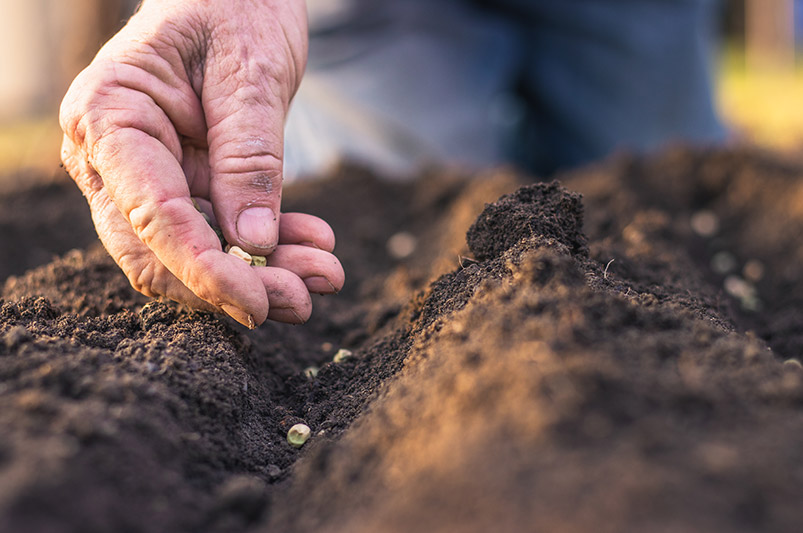
That watering wand also must be in the hand of a worker. If market prices of hemp go down, labor will become a larger percentage of farm expenses and harder to justify. A cost-to-benefit analysis might rule out greenhouses on labor-saving calculations alone.
Directly sowing hemp seeds is inherently less labor intensive, requiring only one round of planting, instead of germinating seeds in greenhouse containers and transplanting into the field. While still gaining an understanding of which hemp plants will do best for them, farmers may want to eliminate the additional labor of greenhouses. Transplant shock will kill a certain percentage of hemp plants — plants into which farmers already have poured money. Better to lose a seed by that logic.
Sowing directly also can afford hemp farmers a later planting window. To control plant size — keeping hemp plants and their harvest manageable — savvy farmers will wait until June or even July at some latitudes to plant in preparation for a late October harvest. There is no sense in giving hemp seedlings a head start so they can grow into giants that will need to be propped up (with labor and supplies) by late September.
Hemp farmers might ask: “Why invest in greenhouses at all if seedlings won’t hit real dirt and be exposed to the elements until summer officially has begun?” Directly sown hemp plants often are “hardened off” earlier, strengthening them against the elements and setting them up for success. Nature can cull weaker hemp plants that likely would not have survived in any case. This approach could be ideal for locales with long growing seasons and/or no late-spring freezes. Let the hemp plants do what they do naturally!
Cons of directly sowing hemp seeds
Let’s get one hard truth out in the open: There really is no way — excepting an advantageous microclimate — to extend a region’s growing season when planting hemp directly into the ground. But even relying on a microclimate to plant much earlier than one’s peers is risky business. Directly sowing hemp seeds is not ideal in places with short growing seasons or harsh conditions. Overall, there will be lower germination rates in such exposed environments. Young hemp plants are especially susceptible to dying from late frosts prior to plants’ root penetration and development of tough cellular structure.
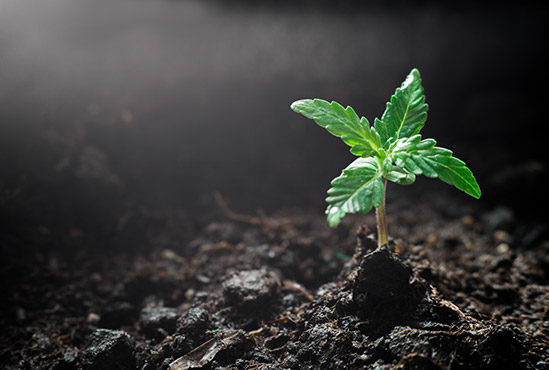
Moisture levels and temperature are critical when direct sowing hemp seeds. Cannabis seed will not germinate unless daytime temperatures are in the 60’s and moisture levels remain constant. If these factors are not met, germination rates will be sporadic. It is very difficult to line up direct sown seed with drip tape, so overhead watering is recommended. Germination rates will be higher when the soil is fully saturated.
It can be tough to adequately water an army of baby hemp plants on a large scale. If irrigation hasn’t been tested and walked for inspection of every plant, hemp farmers are risking loss. Uneven terrain or pockets of hard pack, not to mention inevitable irrigation equipment issues, are just a few issues to remedy at a critical phase in hemp plants’ development. Ask any hemp farmer with even a year of experience, and they will tell you it is easy to overlook some plants and then lose them to drying out.
On the other side of the spectrum, it’s almost as easy to kill tiny hemp seedlings by excess or heavy-handed watering. An irrigation flood could wash away hemp plants that have yet to set their roots. Overhead sprinklers can pummel them to death.
When hemp seedlings do germinate and begin to populate an acreage, they immediately become vulnerable to predators and pests or even a careless employee’s error. Young, tender plants are delicious snacks for birds or rodents, even deer, so early preventative measures will go a long way toward mitigating these issues. Pre-season strikes on ground pests, fencing for deer and an early-action integrated pest management system often are a hemp farmer’s only hope for defending acres of hemp.
Direct to soil planting also requires more weeding as the seedling gets its start. If you’re not careful, weed competition will stunt their growth.
Greenhouses provide barriers of separation and the means to isolate issues. Pests, disease and a host of other problems can be managed much more easily and efficiently when hemp populations aren’t all together in the same place.
After coming through the stress and chaos of planting — having filled a hemp field’s gaps and seeing their crop starting to grow — farmers must consider the long game. If different soil conditions and other factors stunt the hemp’s growth — or kill some sections of the farm while boosting early growth in others — an uneven canopy may result, and some replanting may be necessary. While some hemp farmers may be thankful anything grew at all, they may face logistical headaches when organizing harvest and post-production.
Were the right strains or phenotypes replanted in the missing plots? Will they get enough light? Will they mature at the same time? Will they mature before frost or rain? Is it even worth filling gaps at a certain point in the season? These are all questions that hemp farmers must ask themselves when replanting missing spots in a hemp field.
To germinate hemp indoors or to sow hemp outside?
Choosing to sow hemp seeds directly, or to plant first in a greenhouse, sheds different light on farmers’ questions and considerations around hemp cultivation. The effect of each method can be exponential, often with decisions being final — no “do-overs” allowed. Gambling, however, can propel a project or industry toward breakthroughs to the next level. A status quo simply doesn’t exist in the American farming hemp game. Innovations are needed before farmers can trust or implement standards, so don’t be afraid to experiment with what might work best for you and your farm. A gamble this season could be a practical demonstration of next year’s ideal business model!


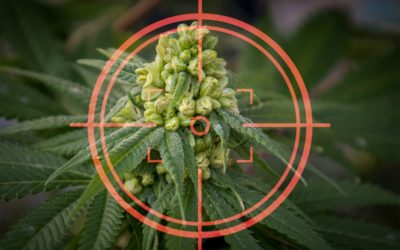
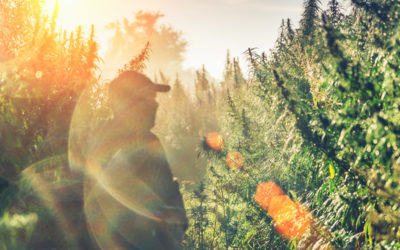
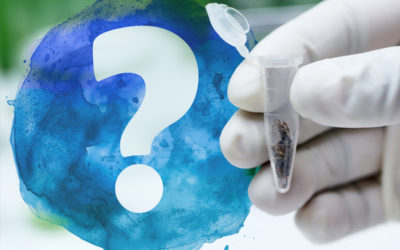
0 Comments